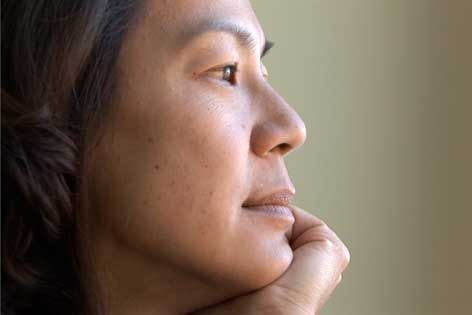On the cutting edge
Beall Center director Eleanore Stewart helps push the definition of art

Most museum directors don’t have to worry about their artwork malfunctioning. They don’t have to call an IT specialist to maintain a sculpture or reboot an oil painting.
Yet, as director of the Beall Center for Art and Technology, Eleanore Stewart doesn’t have the luxury of installing an exhibit and knowing that the art will stay fixed to a wall or balanced on a pedestal.
“That’s part of the challenge of being on the cutting edge,” Stewart says. “We’re trying to support the development of new forms of artistic expression and audience experiences using technology.”
At the Beall, the exhibits don’t just hang there. Visitors interact with them.
“These new art forms are breaking down conventional boundaries between the artistic and scientific disciplines and redefining the experience of art,” Stewart says.
She works with artists who use different devices to engage visitors – moving beyond the traditional devices of keyboard, mouse or joystick to employ more unusual sensor devices.
“Many of the works respond to a person’s movements, presence or voice,” she says. “Artists also are using technology to expand the human senses and allow visitors to experience their body in different ways – magnifying things they normally aren’t aware of, like their blood pressure, brain waves or their breath.”
One of Stewart’s favorite works was “Mobile Feelings” in last fall’s show, “Five.” Visitors could share the sound of their heartbeat with another person via mobile phones equipped with biosensors.
“It was a fascinating way to get to know a complete stranger in such an intimate way,” she says. “That’s what art is all about – giving you new perspectives and experiencing life in new ways.”
The current exhibit, “Quantizing Effects: The Liminal Art of Jim Campbell,” features low-resolution LED lights in various size grids to explore the limits of the analog and digital divide.
Stewart joined the Claire Trevor School of the Arts in 1999, and in 2003 was appointed assistant dean. In January 2004, she also became director of the Beall Center. While not herself an artist, her background in starting up technology initiatives in academic environments was perfect preparation for her current role.
Unlike curators at traditional museums, Stewart must answer critics who contend new media exhibits like this aren’t “real art.”
“This art doesn’t look like what art used to look like,” she says. “It’s a revolutionary period for the arts, and the expanding role of technology in our lives only increases the ways in which artists will employ them to new ends.”
She also has to contend with technological glitches.
“Every time the Beall Center has a tour, you hold your breath the art will keep working until all the visitors have left,” Stewart says. “There’s a lot of initial instability with new technology. It’s part of being on that edge. But it’s where the center is committed to being.”
